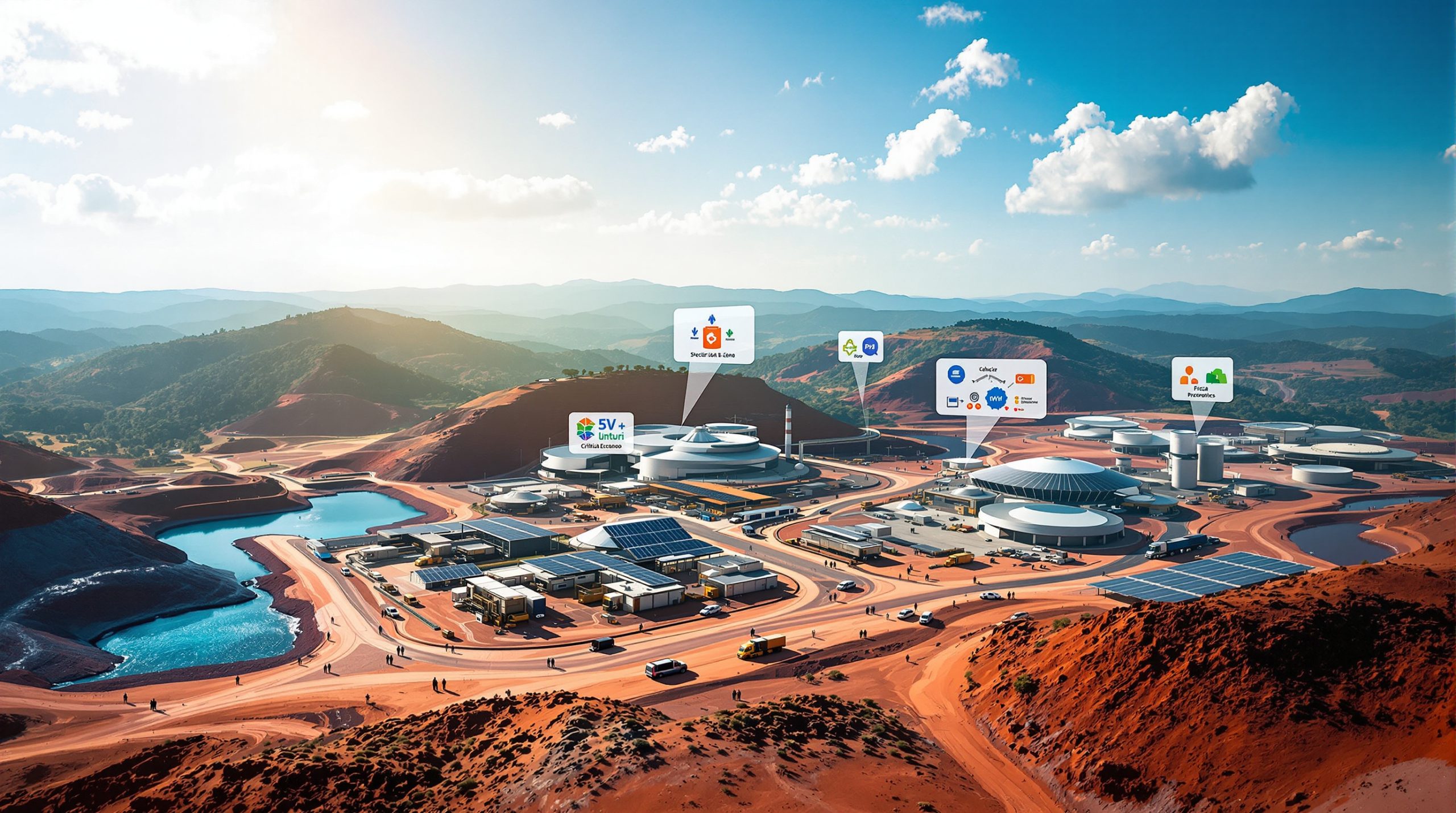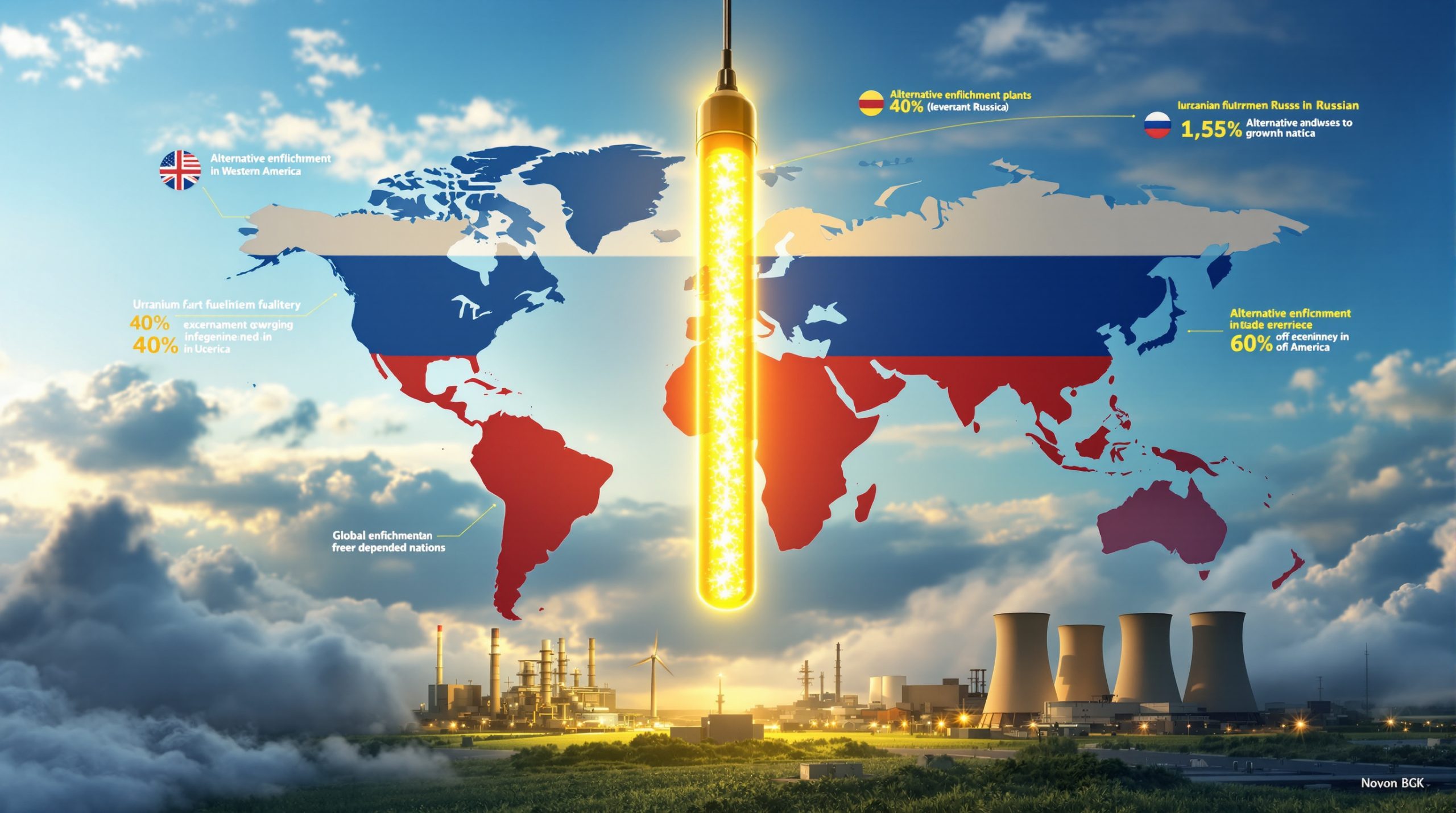Understanding Freeport's Force Majeure: Impact on Global Copper Markets
The copper market has been jolted by a significant disruption at one of the world's largest production sites. Freeport-McMoRan's declaration of force majeure at its Grasberg Block Cave mine in Indonesia following a tragic incident has sent ripples through global markets, highlighting the fragile balance of copper supply chains worldwide.
What Is a Force Majeure and Why Did Freeport Declare One?
Force majeure, a legal provision allowing companies to temporarily suspend contractual obligations due to extraordinary circumstances, was invoked by Freeport following a catastrophic mud rush incident at their Grasberg operation. The September 8, 2025 event resulted in two fatalities and left five team members missing, creating an operational emergency that halted production at this crucial copper source.
The Grasberg Mine Incident Explained
A mud rush occurs when a sudden inflow of mud and material infiltrates mining tunnels, creating extremely hazardous conditions that render continued operations impossible. This particular incident was severe enough to completely halt activities at one of the world's premier copper and gold mining complexes, triggering immediate supply crunch strategies across the industry.
The incident's severity prompted Freeport to acknowledge their inability to fulfill existing copper delivery commitments, necessitating the force majeure declaration. Such declarations are relatively rare in stable mining jurisdictions, highlighting the exceptional nature of the disruption.
How Force Majeure Works in Mining Contracts
In the mining sector, force majeure clauses serve as critical risk management tools. These provisions create a legal pathway for producers to temporarily suspend their supply obligations when faced with truly extraordinary circumstances beyond reasonable control.
Unlike standard contract breaches, force majeure invocations require demonstrating that unforeseen events made performance genuinely impossible—not merely difficult or unprofitable. Mining contracts typically specify qualifying events, which may include natural disasters, accidents, political instability, labor disputes, or infrastructure failures.
For copper buyers, a supplier's force majeure declaration triggers immediate supply chain reassessments. Contract terms usually specify notification requirements, mitigation responsibilities, and the expected process for resuming deliveries once conditions normalize. This structured approach helps manage the market disruption that inevitably follows such declarations.
How Significant Is the Grasberg Mine Disruption?
The Grasberg disruption represents far more than a localized operational challenge—it constitutes a substantial shock to global copper supply fundamentals that will reverberate throughout markets for months, if not years.
Grasberg's Position in Global Copper Supply
Grasberg stands as one of the world's premier copper and gold operations, with an outsized influence on global supply forecast. As Indonesia's flagship resource project, the mine has been a cornerstone of global copper production for decades.
The operation's scale is difficult to overstate—it represents a substantial percentage of global annual copper output and serves as a critical supply source for manufacturers worldwide. Its significance extends beyond raw production numbers, as Grasberg's high-grade ore contributes to the premium copper products essential for advanced manufacturing and technology applications.
The mine's strategic importance also derives from its relative stability in recent years. While other major copper-producing regions have faced political challenges, labor disputes, or declining grades, Grasberg had been viewed as a relatively reliable production center—making this disruption all the more impactful.
Production Impact Timeline
According to company statements, copper and gold sales from Grasberg will be minimal throughout the fourth quarter of 2025. The recovery process will be lengthy and complex, with a phased restart projected to begin only in early 2026.
The extended timeline reflects both the technical challenges of safely resuming underground operations following a mud rush and the necessary implementation of enhanced safety protocols to prevent recurrence. Full production levels may not be achieved until 2027, creating a prolonged supply gap that markets must absorb.
This extended recovery period is particularly problematic given current market dynamics. Unlike previous disruptions that occurred during periods of surplus, this outage coincides with already-tight supply conditions and growing demand from electrification initiatives worldwide.
Why Are Copper Prices Surging Following the Announcement?
The market's immediate reaction to Freeport's announcement was decisive, with copper prices jumping over 3.5% as traders and consumers processed the implications of the supply disruption.
Immediate Market Response
The price surge following the force majeure declaration reflects both fundamental supply concerns and technical trading dynamics. London Metal Exchange (LME) copper broke through the significant resistance level of 10,160, which had previously been tested and rejected four times. This technical breakout, combined with genuine supply concerns, propelled prices above 10,300.
This price action demonstrates the copper market's current sensitivity to supply disruptions. Unlike previous periods where robust inventory levels might have cushioned such shocks, today's relatively tight market conditions amplify the impact of production outages.
The magnitude of the price move also reflects copper's dual role as both an industrial metal and a financial asset. Beyond physical users adjusting procurement strategies, financial participants including hedge funds and commodity trading advisors responded to the technical breakout by increasing long positions.
Compounding Supply Challenges
The Grasberg disruption doesn't exist in isolation—it compounds existing supply challenges across the global copper landscape. Production issues at other major mines, including Hudbay's Constancia operation in Peru and Codelco's operations in Chile, had already created supply headwinds.
These concurrent disruptions create a perfect storm for copper supply, with multiple major sources experiencing simultaneous production constraints. The cumulative impact far exceeds what might be expected from any single disruption, limiting the market's ability to compensate through alternative supply sources.
The timing is particularly challenging given current inventory dynamics. While statistical warehouse stocks had shown some improvement in recent months, physical metal availability remains tight in key consumption regions. This geographic mismatch between where copper is stored and where it's needed further exacerbates the supply challenge.
What Does This Mean for Global Copper Inventories?
The Grasberg disruption forces a reassessment of copper inventory adequacy and highlights the complex relationship between statistical stockpiles and actual metal availability.
Current Inventory Situation
Prior to the Grasberg incident, visible copper inventories on major exchanges had been showing signs of modest improvement. However, these headline figures mask a more complex reality where physical metal availability remains constrained in key consumption regions.
The Freeport mine force majeure highlights how quickly this apparent surplus can be threatened by production disruptions. Exchange inventory statistics provide only a partial picture of metal availability, as a significant portion of global copper stocks exists outside of transparent reporting mechanisms.
Industrial consumers maintain strategic stockpiles, metal sits in bonded warehouses, and material moves through extended supply chains—all creating potential buffers against short-term disruptions. However, the extended nature of the Grasberg outage threatens to deplete these buffers over time.
Regional Imbalances in Copper Distribution
A significant factor complicating the copper market is the uneven distribution of metal globally. Recent trade tensions and tariff concerns had prompted accelerated imports into certain regions, creating geographic imbalances in copper stockpiles.
This regional misalignment means that even with statistical inventories appearing adequate, physical metal may not be available where it's most needed. Premium levels for immediate delivery have begun reflecting these regional tightnesses, with spot premiums expanding in areas most affected by the Grasberg disruption.
The situation creates a complex market where aggregate inventory numbers fail to capture the operational reality faced by consumers. Transportation constraints and logistical challenges further complicate the rebalancing of these regional disparities, potentially creating localized supply squeezes even if global numbers appear balanced.
How Does This Affect Different Copper Market Participants?
The market disruption creates a complex landscape of challenges and opportunities across the copper value chain, with impacts varying significantly between participant groups.
Impact on Industrial Consumers
For industrial consumers of copper, Freeport's force majeure creates immediate supply chain challenges that require rapid adaptation. Manufacturers in copper-intensive sectors like electronics, construction, and renewable energy face potential material shortfalls that could disrupt production schedules.
These consumers must navigate several immediate challenges:
- Securing alternative supply sources in an already tight market
- Managing potential cost increases as spot premiums expand
- Evaluating inventory strategies to buffer against extended disruption
- Considering contractual implications of their own delivery commitments
The impact varies significantly by sector and region. Companies with flexible sourcing strategies, established relationships with multiple suppliers, and robust inventory positions will navigate the disruption more successfully than those reliant on just-in-time delivery from limited sources.
Opportunities for Other Producers
While challenging for consumers, the supply disruption creates strategic opportunities for competing copper producers. Companies with available production capacity or inventory positions may benefit from:
- Higher realized prices on spot market sales
- Increased demand for alternative supply sources
- Opportunities to strengthen customer relationships through reliable delivery
- Potential premium pricing for guaranteed supply security
Producers with the ability to accelerate production or bring mothballed capacity online may find particularly attractive economics during this period of elevated pricing. The situation also highlights the strategic value of geographic diversification in production portfolios, as operations outside the affected region become increasingly valuable.
What Are the Long-Term Implications for Copper Markets?
Beyond the immediate price impact, the Grasberg disruption has profound implications for copper's longer-term supply-demand dynamics and investment landscape.
Structural Supply-Demand Dynamics
The incident occurs against a backdrop of structural changes in copper demand patterns. While traditional demand drivers like Chinese housing construction have moderated, new sources of consumption are accelerating:
- Renewable energy infrastructure deployment continues expanding globally
- Electric vehicle production requires significantly more copper than conventional vehicles
- Grid modernization initiatives demand substantial copper inputs
- Industrial electrification efforts increase copper intensity across manufacturing
These surging demand trends remain robust even as major mines face production challenges. The Grasberg disruption highlights the vulnerability of supply at precisely the moment when consumption patterns are evolving toward more copper-intensive applications.
The timing creates potential for a sustained period of market tightness as supply struggles to keep pace with evolving demand patterns. This structural imbalance could support higher price levels even after the immediate disruption resolves.
Investment Implications for Future Supply
The force majeure underscores the critical need for continued investment in copper production capacity. Current price levels, while elevated compared to historical averages, may still be insufficient to incentivize the development of new mining projects at the scale needed to meet projected demand growth.
Several factors complicate the investment landscape:
- Declining ore grades at existing operations increase production costs
- Permitting timelines for new projects extend for years or decades
- Capital intensity of new developments continues increasing
- Technical challenges of accessing deeper or more complex deposits
- Growing ESG requirements add complexity and cost to project development
These constraints mean that even with attractive pricing signals, supply responses may be slower and more limited than in previous cycles. The extended lead times between investment decisions and first production create potential for sustained periods of market tightness before new supply can balance growing demand.
How Does This Connect to Broader Commodity Market Trends?
The Grasberg disruption and resulting copper market dynamics reflect broader patterns visible across multiple commodity markets, creating a complex landscape for investors and industrial users.
Parallels with Other Metals Markets
The tightness in copper markets mirrors similar dynamics in other metals. Platinum, for instance, has seen nearly 70% price gains this year amid physical market tightness, reflected in steep backwardation in its futures curve.
These parallel trends across multiple metals suggest broader structural factors affecting commodity supply chains globally:
- Underinvestment in production capacity during previous price downturns
- Growing demand from energy transition applications
- Increasing technical challenges in accessing new resources
- Geographic concentration of production creating vulnerability to disruption
- Rising production costs affecting project economics
The common themes across these markets indicate systematic rather than isolated challenges in meeting evolving demand patterns. This suggests potential for coordinated price movements across the industrial metals complex rather than isolated responses in individual commodities.
Physical Markets vs. Financial Markets Divergence
An interesting disconnect exists between physical commodity markets signaling tightness and financial markets reflecting different economic outlooks. While physical copper, platinum, and other metals show clear signs of supply constraints, other market indicators like crude oil prices suggest economic slowdown concerns.
This divergence creates both challenges and opportunities for investors attempting to position for future price movements. The physical tightness suggests structural supply issues that could support prices even during periods of economic moderation, while broader economic signals might typically suggest caution on cyclical commodities.
The mixed signals highlight the importance of distinguishing between cyclical economic factors and structural supply-demand imbalances when evaluating commodity price prospects. Those who focus exclusively on macroeconomic indicators may miss the supply-side constraints driving physical market premiums.
What Should Investors Watch Going Forward?
The complex and dynamic nature of the current copper market creates both risks and opportunities for investors. Several key indicators and potential scenarios merit close monitoring as the situation evolves.
Key Indicators to Monitor
Investors should closely track several indicators to gauge the ongoing impact of the Grasberg disruption:
-
Recovery Timeline Updates: Any changes to Freeport's projected restart schedule will significantly impact medium-term supply expectations. Company statements, regulatory filings, and technical reports can provide valuable insights into progress and challenges.
-
Exchange Inventory Movements: Changes in LME and COMEX copper inventory levels offer important signals about market tightness. Particular attention should be paid to:
- Rate of inventory drawdowns or builds
- Warrant cancellations indicating metal being prepared for withdrawal
- Geographic distribution of inventory changes across warehouse locations
-
Physical Premium Developments: The spread between physical premiums and futures prices provides critical information about immediate supply availability:
- Regional variations in premiums highlight localized tightness
- Changes in premium structures (spot vs. term) indicate market expectations
- Unusual premium patterns may signal supply chain disruptions
-
Producer Announcements: Production updates from other major copper producers could either exacerbate or mitigate the supply gap:
- Accelerated production from existing operations
- Restart announcements for idled capacity
- Schedule updates for projects in development
- Changes to maintenance schedules at operating mines
-
Policy Responses: Government actions in copper-dependent economies could influence both supply and demand:
- Export restrictions or incentives in producing countries
- Strategic stockpile decisions in consuming nations
- Infrastructure stimulus programs affecting copper consumption
- Environmental policy changes impacting mining industry evolution
Potential Market Scenarios
Several scenarios could unfold in the coming months, each with distinct implications for copper prices and market dynamics:
Scenario 1: Quicker-Than-Expected Recovery
If Freeport manages to resolve safety concerns and resume partial operations ahead of the projected timeline, the immediate supply concerns could moderate. This outcome would likely lead to a partial retracement of the initial price surge, though structural market tightness would likely maintain prices above pre-incident levels.
Scenario 2: Extended Disruption With Recovery Delays
Technical challenges or regulatory requirements could further extend the production outage beyond current projections. This scenario would likely drive copper prices substantially higher as inventory buffers deplete and alternative supply sources prove insufficient to fill the gap. Industrial consumers might implement more aggressive thrifting and substitution measures under this scenario.
Scenario 3: Economic Slowdown Offsetting Supply Concerns
A significant global economic deceleration could reduce copper demand sufficiently to counterbalance the supply disruption. Under this scenario, prices might experience heightened volatility as supply and demand factors push in opposite directions. Regional disconnects might become more pronounced, with some markets maintaining tightness while others experience surplus.
Scenario 4: Accelerated Substitution and Thrifting
Sustained high copper prices could accelerate substitution efforts across multiple applications, particularly in price-sensitive sectors. Aluminum substitution in electrical applications, increased use of optical fiber in telecommunications, and design changes to reduce copper intensity could collectively moderate demand growth. This scenario might create a price ceiling even amid continuing supply constraints.
FAQ: Understanding the Copper Market Impact
What exactly happened at Freeport's Grasberg mine?
A significant mud rush incident occurred on September 8, 2025, resulting in two fatalities and five missing team members at the Grasberg Block Cave mine in Indonesia. The event forced the immediate suspension of operations at this major copper and gold production site. Mud rushes involve the sudden inflow of mud and material into mining tunnels, creating hazardous conditions that prevent safe operation and require extensive remediation before activities can resume.
How long will the production disruption last?
According to company statements, copper and gold sales from Grasberg will be minimal throughout the fourth quarter of 2025. A phased restart is projected to begin in early 2026, with potential return to pre-incident production levels only by 2027. This extended timeline reflects both the technical complexity of safely resuming operations after such an incident and the implementation of enhanced safety protocols to prevent recurrence.
Are other copper mines also experiencing production issues?
Yes, the Grasberg disruption compounds existing challenges at other major operations. Hudbay's Constancia mine in Peru has faced production difficulties related to community relations and technical challenges. Simultaneously, some Codelco operations in Chile have encountered production shortfalls due to declining ore grades and operational issues. These concurrent disruptions create multiple simultaneous supply constraints in the global copper market.
How does copper supply disruption affect renewable energy development?
Copper plays an essential role in renewable energy infrastructure, including solar panels, wind turbines, energy storage systems, and electric vehicle charging networks. Supply constraints and higher prices could potentially:
- Increase manufacturing costs for renewable components
- Extend lead times for project development
- Encourage design modifications to reduce copper intensity
- Accelerate research into alternative materials
- Prioritize copper allocation toward highest-value applications
While short-term disruptions may create challenges, the long-term demand outlook for copper in renewable energy applications remains robust as global electrification efforts continue accelerating.
What's the connection between copper prices and economic outlook?
Copper has historically functioned as an economic barometer due to its widespread use across construction, manufacturing, transportation, and infrastructure sectors. While supply disruptions are currently driving prices higher, broader economic indicators will ultimately influence whether demand can sustain these elevated levels over the medium term.
The relationship between copper and economic activity has evolved as demand drivers shift from traditional construction toward electrification applications. This evolution may reduce copper's correlation with traditional economic indicators while increasing its sensitivity to energy transition spending and policy initiatives.
Further Exploration: Understanding Copper's Future
The Grasberg disruption highlights copper's increasingly complex supply-demand dynamics in a rapidly evolving global economy. Beyond the immediate market impacts, the situation underscores several fundamental shifts reshaping the copper landscape.
The Growing Role of Supply Security
As copper's strategic importance increases with electrification trends, supply security concerns are gaining prominence among both industrial users and policymakers. The Freeport mine force majeure demonstrates how quickly major supply sources can be compromised, raising questions about appropriate inventory strategies and geographic diversification of supply chains.
For industrial consumers, particularly those in critical sectors like defense, energy, and telecommunications, the incident reinforces the value of supplier diversity and strategic stockpiling. For policymakers, it highlights potential vulnerabilities in critical mineral supply chains that may warrant policy interventions or strategic reserves.
Navigating Price Volatility
The sharp price response to Freeport's force majeure announcement illustrates the increasing volatility characteristic of modern commodity markets. This volatility presents both challenges and opportunities for market participants:
- Industrial consumers must develop more sophisticated price risk management strategies
- Producers face complex investment decisions amid price uncertainty
- Investors can identify trading opportunities in volatility patterns
- Traders must navigate technical breakouts while assessing fundamental drivers
Successful navigation of this volatility requires integrating technical analysis with fundamental supply-demand assessment. The most effective strategies recognize when price movements reflect genuine physical market tightness versus speculative positioning or technical factors.
The Evolving Investment Case for Copper
For investors, the Grasberg situation highlights copper's evolving investment characteristics. Beyond its traditional role as a cyclical commodity tied to economic growth, copper increasingly displays characteristics of a strategic metal with structural supply constraints facing growing demand from energy transition applications.
This evolution creates opportunities for investors who can accurately assess the balance between cyclical economic factors and structural supply-demand trends. While short-term price movements may reflect immediate disruptions, longer-term positioning should consider copper's fundamental role in electrification and the challenges of bringing new supply online in a timely manner.
The Grasberg force majeure serves as a powerful reminder that despite copper's long history and mature market structure, significant price discovery events continue to reshape market dynamics. For investors, producers, and consumers alike, understanding these dynamics is essential for navigating an increasingly complex copper landscape.
Ready to Stay Ahead of Major Mining Discoveries?
Discovery Alert's proprietary Discovery IQ model delivers instant notifications on significant ASX mineral discoveries, turning complex market data into actionable investment opportunities. Understand why major mineral discoveries can lead to exceptional returns by exploring the dedicated discoveries page and begin your 30-day free trial today.




